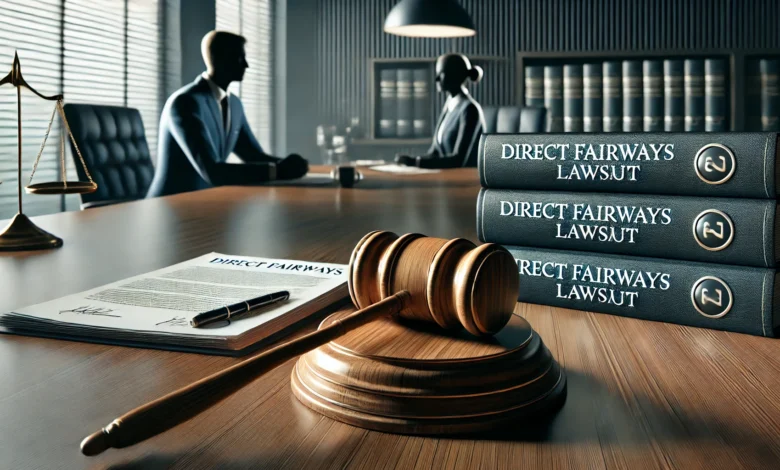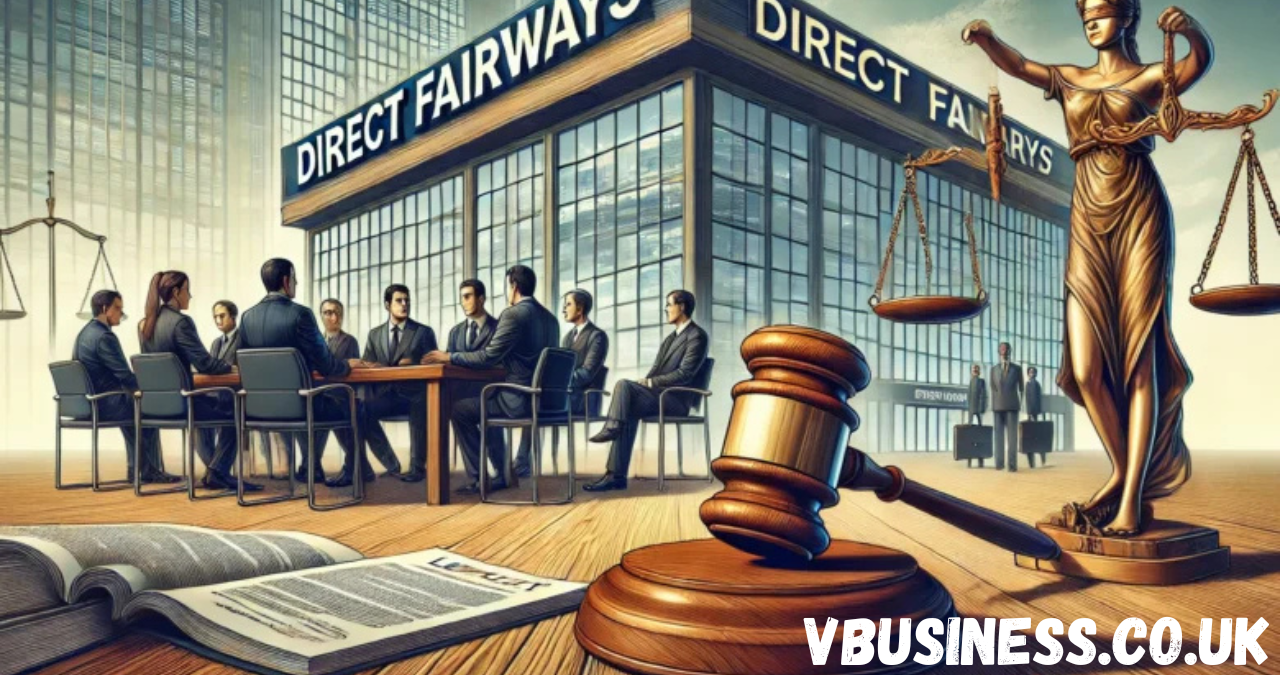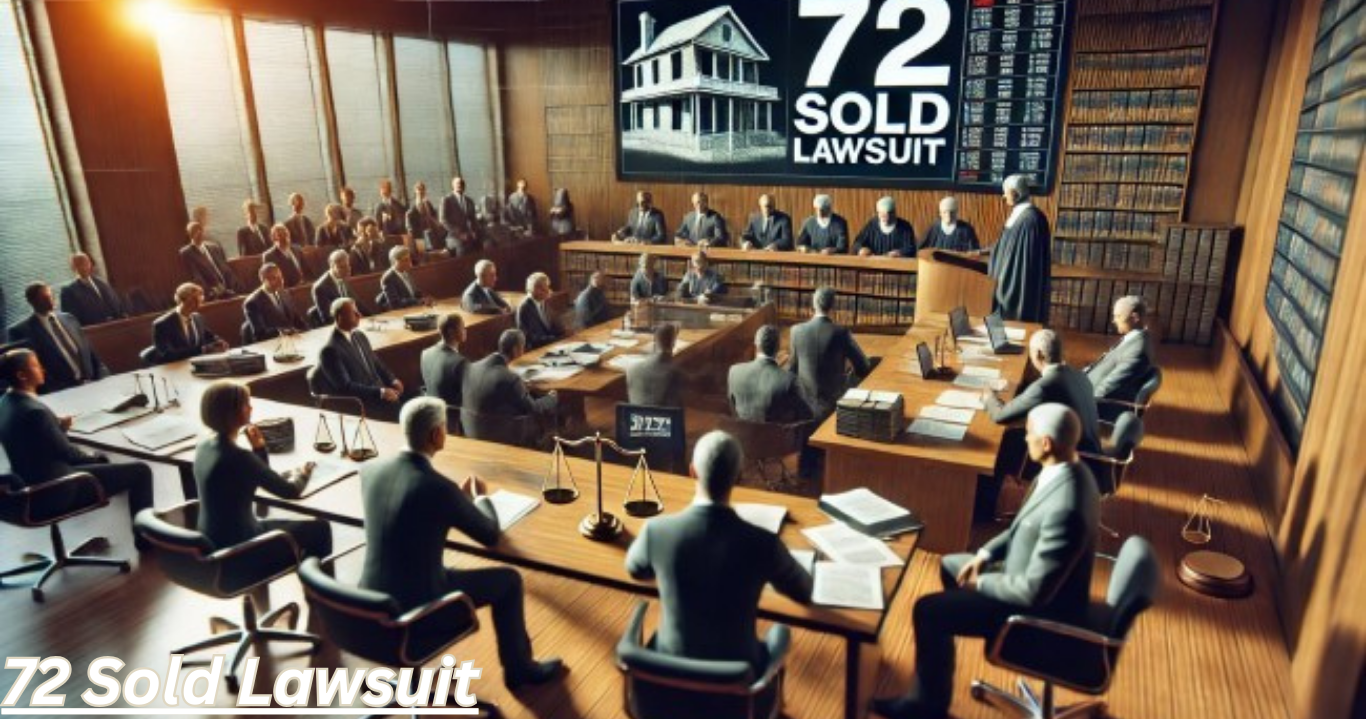If you’ve come across the phrase direct fairways lawsuit, you might be wondering what it’s all about. In this article, we’ll dive into every facet of that legal dispute—explaining its origins, the claims involved, the likely outcomes, and what it means for people affected. Although this sounds complex, we’ll keep things approachable and clear, while still giving you the expert-level insight you deserve.
Direct Fairways Lawsuit: Background and Origins
The origin of the direct fairways lawsuit traces back to allegations made by certain plaintiffs who claimed that Direct Fairways (or its affiliates) engaged in actions violating their rights. The dispute centers around whether certain promises or contracts were honored, whether there was fraud or misrepresentation, and whether the defendants breached certain legal duties. This isn’t just a paper dispute—it impacts real people who believed in the services or products offered and feel wronged.
In many cases, litigation like the direct fairways lawsuit begins after repeated unresolved complaints. The complainants often tried to get resolution directly, but when those efforts failed, they proceeded to court. The complexity of financial or contractual matters frequently forces courts to sift through detailed documentation, communications, and financial records. That’s where legal experts come in, and why this kind of case demands both tactical and technical know-how.
What Is the Direct Fairways Lawsuit About?
When people ask “what is the direct fairways lawsuit?” they’re really asking two questions: what are the plaintiffs claiming, and what defenses might exist? Broadly, the lawsuit alleges that Direct Fairways made representations—either in advertising, contracts, or communications—that were false or misleading. Some of the claims might revolve around promises of performance or returns that never materialized, or hidden expenses that weren’t clearly disclosed.
Defendants in a case like this typically respond by denying wrongdoing, arguing that any statements made were either non-actionable opinions, adequately disclosed, or that plaintiffs assumed the risk. In some instances, they challenge whether the plaintiffs have standing or whether the statute of limitations bars the case. The heart of the dispute often lies in reconciling what was promised, what was delivered, and whether the plaintiffs relied on those promises to their detriment.
Key Claims in the Direct Fairways Lawsuit
One major area of the direct fairways lawsuit tends to focus on misrepresentation or fraud. Plaintiffs may say that Direct Fairways knowingly misled them about returns, service quality, ownership rights, or contractual obligations. If proven, that claim can carry serious consequences, including compensatory and punitive damages. Because these claims involve subjective belief and intent, courts often examine internal records, emails, memos, and other contemporaneous documents to determine if there was a pattern of deception.
Another vital claim is breach of contract. Even if misrepresentation isn’t proven, plaintiffs may argue that Direct Fairways failed to live up to the promises in an agreement. A breach claim is more straightforward in legal terms, but still demands careful documentation: contractual terms, performance benchmarks, and timelines all come under scrutiny. In some cases, plaintiffs will allege both breach and misrepresentation, as they seek to cover alternative paths to recovery.
Procedural Steps and Litigation Process
Once the complaint is filed, the direct fairways lawsuit enters the procedural gauntlet of motions, discovery, and possibly settlement discussions. The defendant might file a motion to dismiss, seeking to knock out portions of the case before it proceeds. Success in that motion can significantly narrow or kill the case early. If the case survives, both sides engage in discovery, exchanging documents, depositions, interrogatories, and expert reports.
During discovery, plaintiffs typically try to uncover internal communications, financial statements, marketing materials, and any other documents that could support their allegations. The defense counters by asserting privilege or limiting scope, and by testing the strength of plaintiffs’ evidence. Midway through, many lawsuits like this pivot toward mediation or settlement if parties see the benefit of avoiding trial. If settlement fails, the case proceeds to trial, where a judge or jury decides liability and damages.
Possible Outcomes and Remedies
Outcomes in a case like the direct fairways lawsuit vary widely. One possibility is dismissal—if the court finds that the plaintiffs’ claims are legally defective. Another is summary judgment in favor of one party before trial, if the facts are undisputed and only legal questions remain. But often, the case goes to trial. A favorable verdict for plaintiffs could mean monetary awards for losses, interest, and possibly punitive damages, depending on the jurisdiction and severity of misconduct.
In addition to monetary relief, plaintiffs might seek injunctive remedies. That could include changes to business practices, disclosures, or oversight requirements. If a class or group of plaintiffs is certified, any remedy might apply broadly to many affected individuals. Settlements often include structured payments, non-monetary terms (like changes in corporate governance), and release of further claims.
Impact on Stakeholders

A direct fairways lawsuit doesn’t just matter to the plaintiffs and defendants—it has ripple effects. For investors or customers connected to Direct Fairways, reputational risk is real. The mere filing of such a lawsuit can erode trust, shake market confidence, or prompt regulatory scrutiny. Suppliers, partners, or affiliates may be drawn in or forced to reassess their own exposure.
Regulators and public interest groups often monitor high-profile disputes. If wrongdoing is found, regulatory agencies may launch parallel investigations, bring claims, or impose fines. Media coverage can heighten pressure on the defendant to settle or reform. In short, the decision in this case can reverberate beyond the courtroom, influencing governance, practices, and public perception.
Considerations for Potential Plaintiffs
If you believe you might be part of the direct fairways lawsuit, there are important steps to consider. First, gathering all relevant documents is essential: contracts, emails, statements, promotional materials, and financial records. The more contemporaneous evidence you have, the better. Second, consult counsel early. Lawyers specializing in commercial litigation, securities, or consumer fraud will help you assess whether your claim is viable, the statute of limitations, and likely recoveries.
Third, understand risks and costs. Litigation is expensive, time-consuming, and uncertain. Lawyers often take on cases like these on contingency, but you should be clear on what percentage you’ll pay if you win. Also be realistic: even strong claims can yield modest awards after costs. Finally, consider alternative dispute resolution. Mediation or arbitration may achieve faster and more certain results than waiting for a court verdict.
Defensive Strategies for Direct Fairways
From the defendant’s side, strong strategies exist in responding to a direct fairways lawsuit. A primary move is challenging the legal sufficiency of the claims via motion to dismiss. If the allegations are vague or don’t state a cause of action, dismissal is possible. Next is aggressive motion practice—seeking summary judgment on portions of the case. If facts aren’t in dispute on key issues, the case can be narrowed substantially before trial.
During discovery, the defendant will aim to challenge the authenticity, relevance, or privilege of documents. Strategic use of expert witnesses may cast doubt on plaintiffs’ damage models or version of events. Settlement is also a tool: sometimes resolving the case on favorable terms (or only for a portion of claimants) is more advantageous than risk at trial. The defendant must also manage public relations and communications carefully, as public perception can influence pressure to settle.
Legal Hurdles and Challenges
A direct fairways lawsuit faces several legal hurdles. Proving fraud or misrepresentation is often tough: plaintiffs must show false statements, knowledge of falsity (or reckless indifference), reliance, and damages. Each element is contested. Defendants will argue that statements were opinions or puffery, or that plaintiffs ignored disclaimers. Reliance is especially tricky—demonstrating that a particular individual read and acted based on a given statement can be difficult.
Statute of limitations is another frequent battleground. Claims must be brought within a legally mandated time window; if too much time has passed, a court may dismiss parts of or the entire case. Standing and causation are often challenged. Defendants argue that even if wrongdoing occurred, it didn’t specifically harm the plaintiff or was not the proximate cause. Thus, building a robust causal chain and showing direct injury is crucial.
What Happens After a Verdict
If a verdict favors the plaintiffs in the direct fairways lawsuit, the court will determine damages. That includes compensatory awards for actual losses, interest, and potentially punitive damages where conduct is egregious. The defendant may have to pay legal costs and may be subject to compliance or injunctive orders. Even after trial, appeals are common. The losing side may challenge the verdict, the legal rulings, or assertion of errors in procedure or evidence.
If the defendant wins, plaintiffs may try to seek appellate review, but reversal is not guaranteed. Usually, a favorable defendant ruling closes the case, but reputational damage may linger. In many cases, one side or the other might appeal, pushing the dispute into higher courts, possibly with precedent impact beyond the parties involved.
How This Case Affects Future Business Practices
A high-profile direct fairways lawsuit can change how companies operate across the industry. Firms may develop stricter documentation, clearer disclosures, better audit trails, and more rigorous internal compliance checks. Some may revise marketing claims, disclaimers, and training to mitigate the risk of misrepresentation claims. Corporations might also enhance internal legal oversight and periodic reviews of advertising, contracts, and communications.
Boards and executives become more cautious. When litigation risk increases, decision-makers often demand more legal input before launching new offerings. Insurance providers might reexamine coverage, premiums, or exclusions for directors’ and officers’ liability. In sum, the lawsuit could prompt systemic shifts, not just for Direct Fairways but for others in related sectors.
Tips for Staying Informed
Keep your ear to the ground if you’re following the direct fairways lawsuit. Legal news portals, court docket trackers, and press releases may announce key developments: motions, decisions, settlements, or appeals. If you’re a claimant or potential one, your counsel should alert you when critical deadlines loom, like responses or appeals. Always verify that sources are up to date; cases evolve rapidly.
If public reporting is limited, it may be worth checking the court’s online docket system or PACER (or a regional equivalent) for filings. Sometimes expert legal commentary can help you understand what rulings mean and whether they affect your stance. Keep an eye on class action notices, as those are often how average plaintiffs become involved.
FAQs
Q: What exactly does “direct fairways lawsuit” refer to?
A: It refers to a legal action brought by individuals (or classes) alleging that Direct Fairways made wrongful promises, misrepresentations, or breaches of contract that harmed them. The phrase is used broadly as shorthand for that dispute.
Q: Can I still join the lawsuit if I was affected later?
A: Possibly, if the case is structured as a class action or allows member joinders. Yet, time limits (statutes of limitation) and cutoff dates often restrict who can join. You’d need to check with counsel or the case docket.
Q: How long does a case like this take?
A: It varies widely. Some are resolved by motion or settlement in months; others go to trial and appeal and take years. Complexity, discovery scope, number of parties, and legal challenges all affect duration.
Q: What if I settled? Can I reopen my claim?
A: Usually not. Settlement agreements almost always include releases of claims. Unless there’s fraud in the settlement itself or a specific carve-out, reopening is extremely difficult.
Q: Is there any risk in joining the lawsuit?
A: Yes—mostly lost legal fees if you lose, or being bound by settlement terms you don’t like. But many plaintiffs’ lawyers take litigation on a contingency basis, meaning you pay only if you win.




